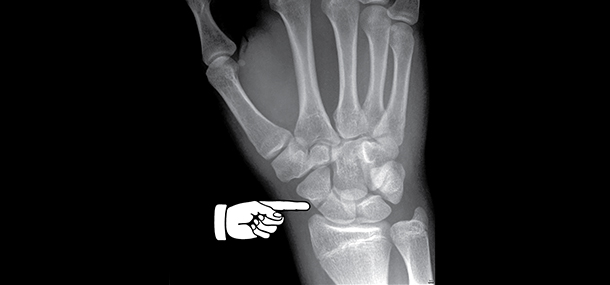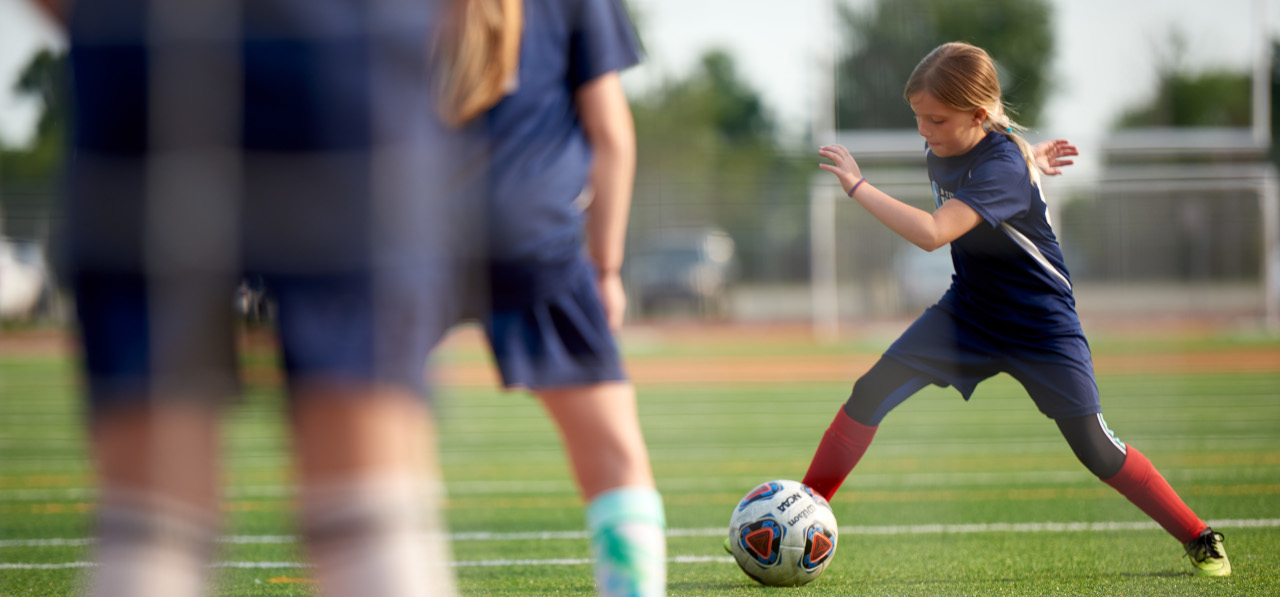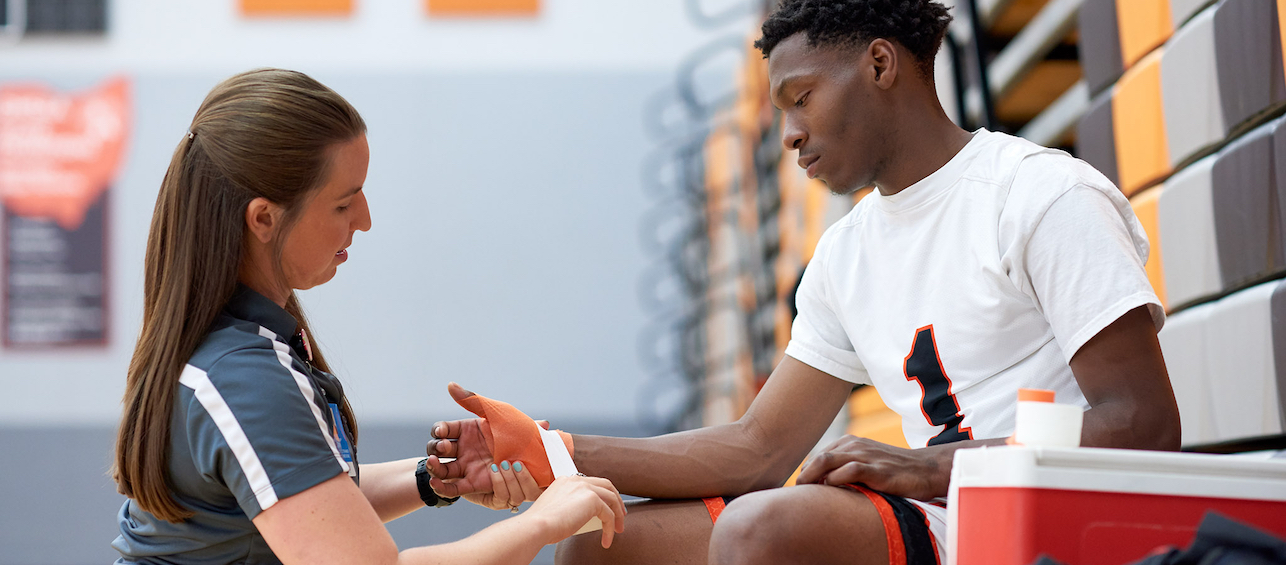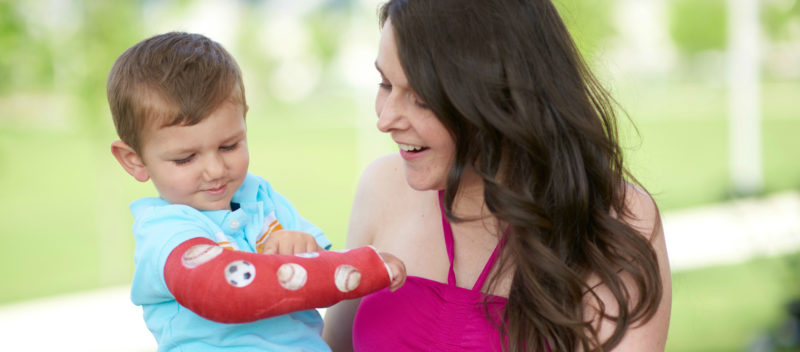Wrist injuries happen in all kinds of sports – football, basketball, gymnastics, cheerleading and even in sports like soccer where the hands don’t typically come into play. As with many common sports injuries, parents often choose to take the “wait and see” approach with a wrist injury. This is reasonable for less serious injuries, but there are steps that can be taken early to determine if the injury needs more attention. The following Q&A looks at courses of action for a wrist injury and the healing process.
How did it happen?
Knowing how a wrist injury happened will be helpful in making a diagnosis and identifying the correct options for treatment. The most common way a wrist injury occurs is with a fall onto an outstretched hand (FOOSH). Other mechanisms of injury include twisting and/or direct contact, such as a blow to the wrist.
Where does it hurt?
Signs and symptoms of more severe wrist injuries include:
- Pain at the base of the thumb or bruising and swelling in that area of the hand/wrist/forearm after an impact.
- Increased pain with movement.
- Decreased range of motion – meaning the movement of the wrist is limited in some way.
- Difficulty gripping an object such as a ball, bat, stick or bar.
If your child presents with one or more of these symptoms for longer than a couple of days, it’s best to seek medical attention.
What should we do until we can schedule an appointment?
If a coach or trainer is available to wrap or immobilize the injured wrist, that is an excellent thing to do until the injury can be fully evaluated. Ice on the injury will help reduce swelling.
An evaluation of a wrist injury can be performed by your child’s regular doctor if the injury occurs during their hours. If it is after hours or on the weekend, urgent care will be a good option. You can also call our injury line at 513-803-4878 (HURT) if you are in the Cincinnati area – we often have same-day appointments available.
How can we tell if it’s broken?
Wrist injuries left untreated can result in chronic pain and instability in the long run, especially if the underlying issue is a fracture or broken bone. Diagnostic imaging is the best way to tell if a fracture has occurred. If your physician suspects a break or fracture after a physical exam of the injured area, your family will be referred to a radiologist for tests which may include an X-ray, MRI or CT scan.
Which wrist bone is broken?
Your wrist is made up of many bones. The most commonly fractured bone with a sports-related wrist injury is the radius bone, accounting for roughly one-third to half of all wrist fractures in children. The radius bone runs from the elbow down the forearm to the base of the thumb. Though less common in children, wrist pain may also be associated with a scaphoid fracture (see image above). The scaphoid bone, located on the thumb side of the wrist, is one of the eight small bones connecting the hand to the forearm – a group known as carpal bones. Of the bones in this group, the scaphoid is most commonly fractured.
When can my child return to play?
Once a diagnosis is made, your doctor will determine the best treatment plan for your child. This may include bracing, having the wrist set in a cast – which can take between four to six weeks to heal – or surgery if necessary. Recovery times after a surgery will vary. Depending on the sport your child plays and the severity of her or his wrist injury, the length of time before he or she can get back in the game will also vary.
Following the treatment and rehabilitation plan after injury will be vitally important to a full recovery. Once strength and function have been restored to the injured wrist, your young athlete should be ready to get back to the sport he or she loves.
Can wrist injuries be prevented from occurring or re-occurring?
Injuries in sports are unavoidable, but there are things your child can do to decrease his or her risk of a wrist injury. Avoiding FOOSH is one of them. While it isn’t always possible to control a fall, encourage your young athlete to learn how to break falls without using their hands or outstretched arms. Try using the knees or forearms instead.
Strengthening the area around the forearm, wrist and hand with targeted exercises is another great preventative step athletes can take to avoid a potential wrist injury in the future. If your daughter or son has already had a wrist injury previously, a trainer or doctor may recommend taping or bracing before games and practices in order to prevent re-injuring the wrist.
To make an appointment for an injury evaluation with our orthopaedic and sports medicine team, call 513-636-2371.





